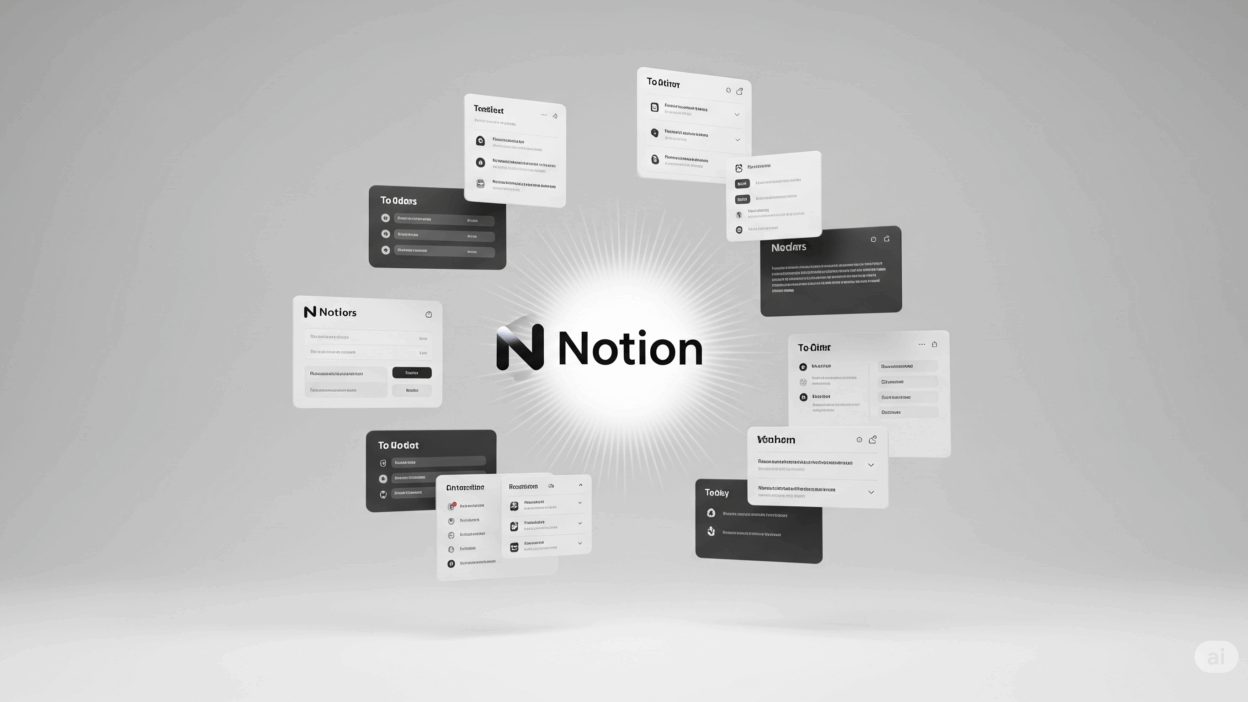So, you’ve dipped your toes into the world of Notion, the all-in-one workspace that’s taken productivity by storm. You’re probably familiar with the basics: text, headings, and maybe even a to-do list or two. But Notion’s true power lies in its vast library of “blocks” – the fundamental building blocks you use to create everything from simple notes to complex project management systems.
Forget static documents and scattered information. Notion’s blocks allow you to create dynamic, interconnected pages that adapt to your specific needs. Let’s dive into 10 essential Notion blocks that every user should know:
1. Text Block (/text): The Foundation
While seemingly simple, the Text block is the bedrock of all your content. It’s where your ideas take shape, your thoughts flow, and your information resides. Master basic formatting like bold (**), italics (*), and strikethrough (~~) within this block to add emphasis and structure to your writing.
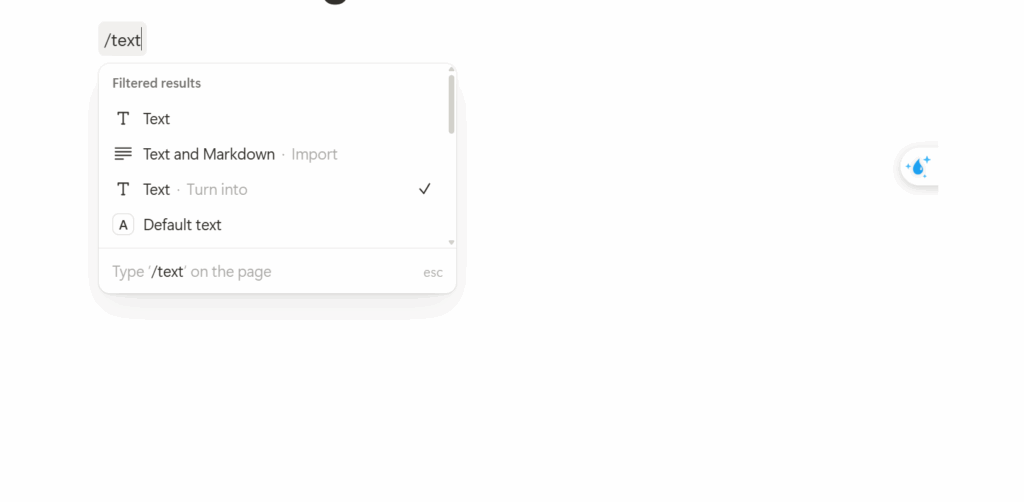
2. Heading Blocks (/h1, /h2, /h3): Structure is Key
Just like in any well-organized document, headings in Notion provide crucial structure and readability. Use /h1 for main titles, /h2 for subheadings, and /h3 for smaller sections. This not only makes your pages easier to scan but also allows Notion to automatically generate a Table of Contents (more on that later!).
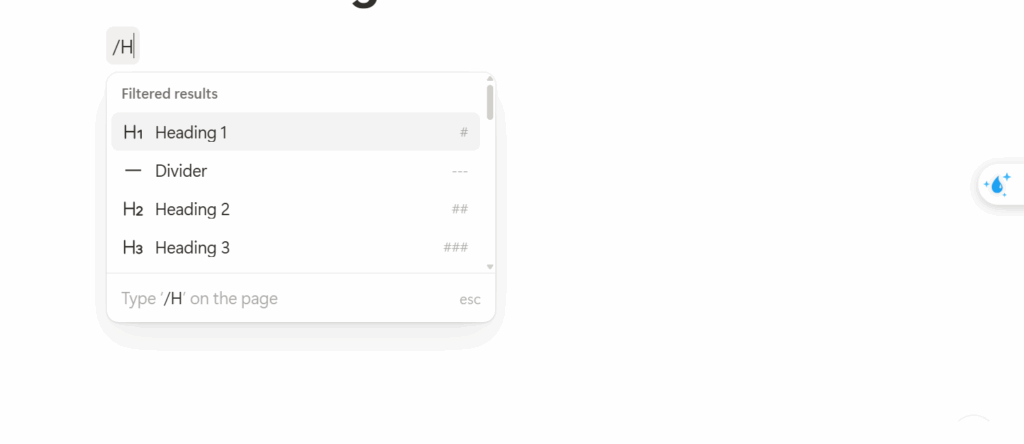
3. To-Do List Block (/todo): Get Things Done
The classic to-do list, Notion style. The /todo block allows you to create interactive checklists. Simply type your task and click the empty circle to mark it as complete. Drag and drop tasks to reorder them and stay organized. This simple block is surprisingly powerful for managing personal tasks and project steps.
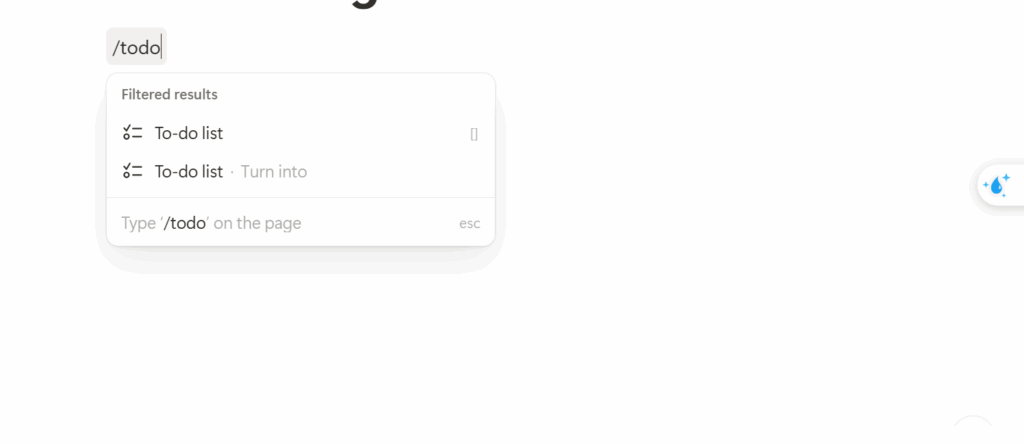
4. Bulleted List Block (/bullet): Organize Ideas
Perfect for brainstorming, outlining, and listing related points. The /bullet block creates clean, hierarchical bullet points that you can easily expand and collapse. Use indentation (by pressing Tab) to create sub-points and structure complex information logically.
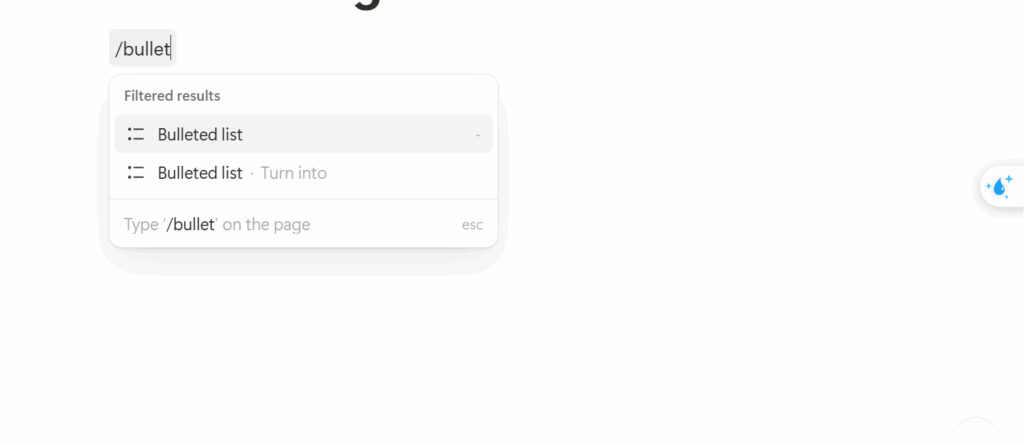
5. Numbered List Block (/numbered): Sequential Steps
When the order of items matters, the /numbered block is your go-to. Whether you’re outlining a process, listing instructions, or ranking priorities, numbered lists provide a clear and sequential structure.
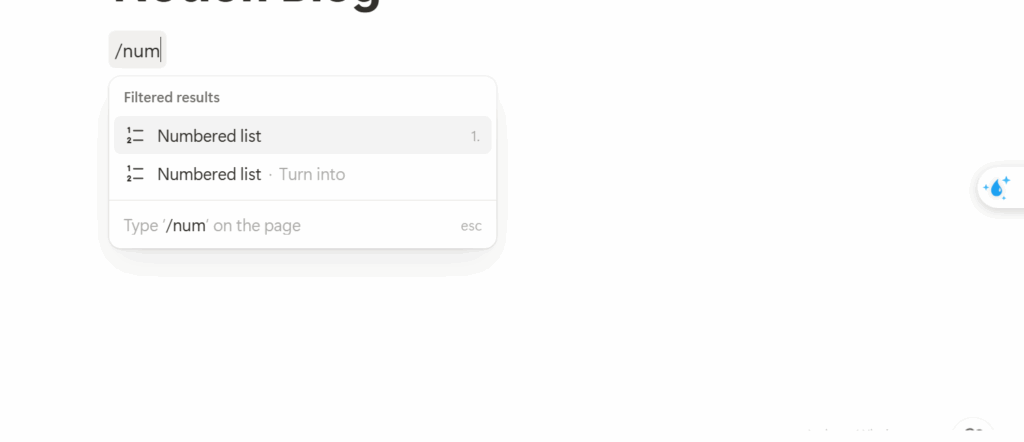
6. Divider Block (/divider): Visual Separation
Sometimes, a simple visual break can significantly improve the readability of your page. The /divider block creates a thin horizontal line that helps to separate different sections of content, making your pages less cluttered and easier to digest.
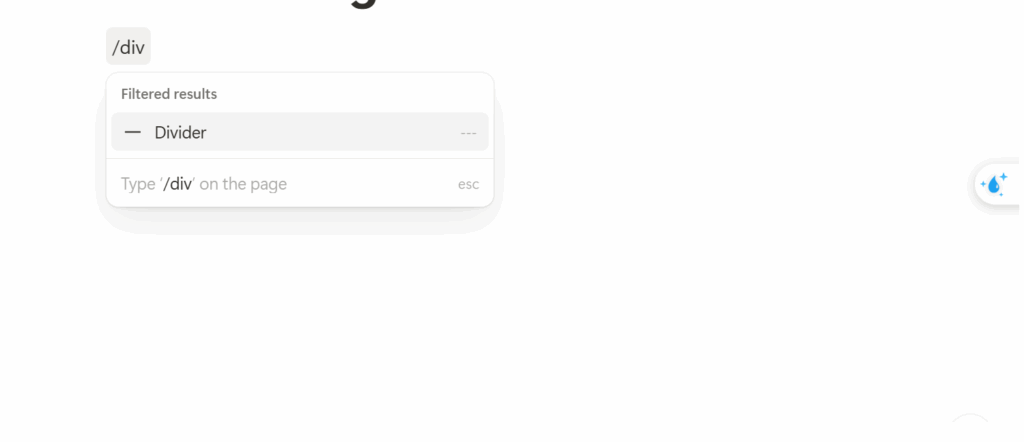
7. Page Link Block (/page): Connect Your Workspace
This is where Notion’s interconnected nature truly shines. The /page block allows you to create a link to another page within your Notion workspace. This is fundamental for building navigation, creating databases with linked records, and organizing vast amounts of information in a coherent way.
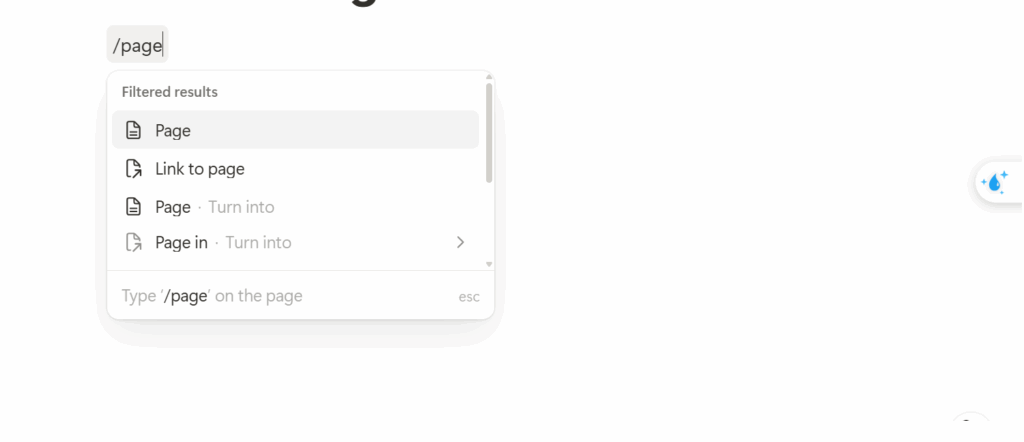
8. Table Block (/table): Simple Data Organization
For straightforward data organization, the /table block offers a clean and intuitive interface. Create rows and columns to display information, similar to a basic spreadsheet. While not as powerful as Notion’s Database block, it’s perfect for simple lists, comparisons, and quick data entry.
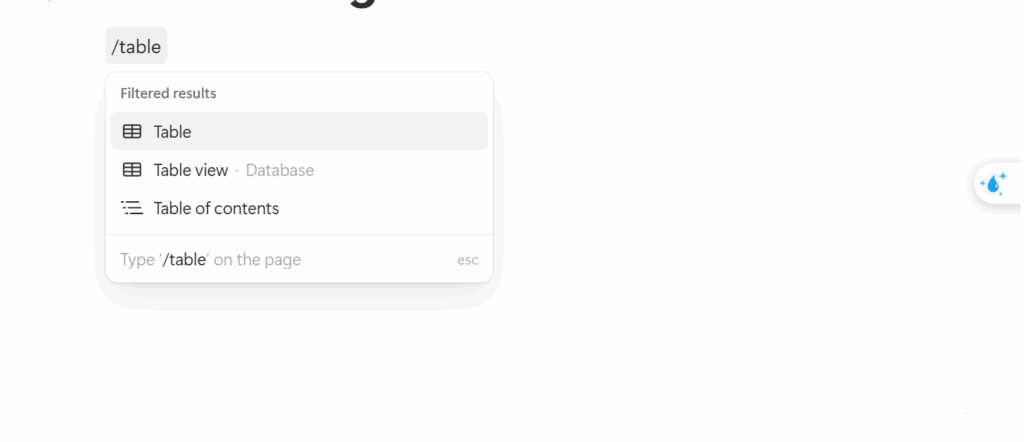
9. Toggle List Block (/toggle): Hide and Reveal
Got a lot of information on a page but want to keep it concise? The /toggle block allows you to hide content under a collapsible heading. This is ideal for FAQs, detailed explanations, or any information you don’t need to see all the time.
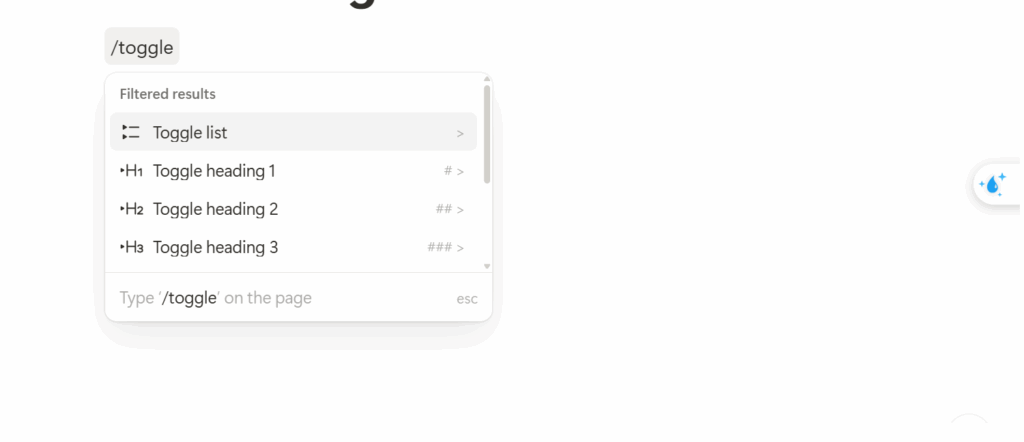
10. Image Block (/image): Bring Your Pages to Life
Visuals can significantly enhance your Notion pages. The /image block allows you to upload images directly or embed them from the web. Use images to illustrate points, add branding, or simply make your workspace more visually appealing.
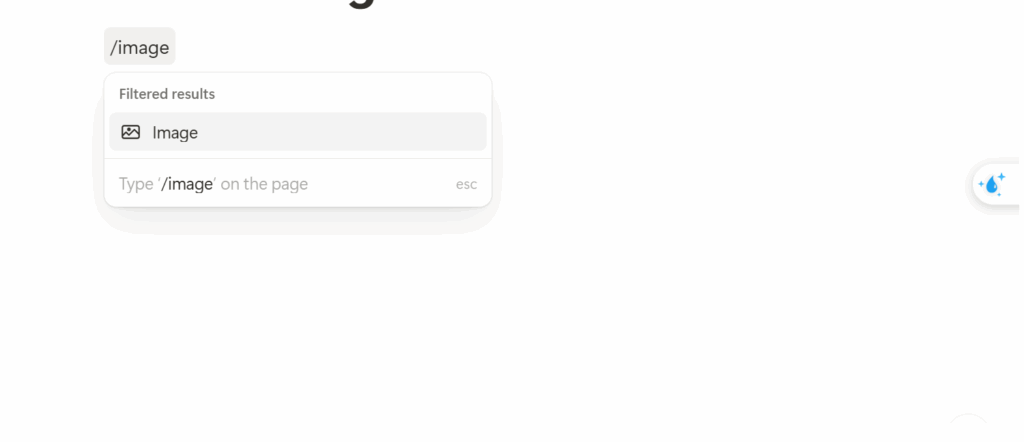
Level Up Your Notion Game
These 10 essential blocks are just the tip of the iceberg when it comes to Notion’s capabilities. But mastering these fundamental building blocks will provide you with a solid foundation to explore more advanced features like databases, embeds, and integrations.
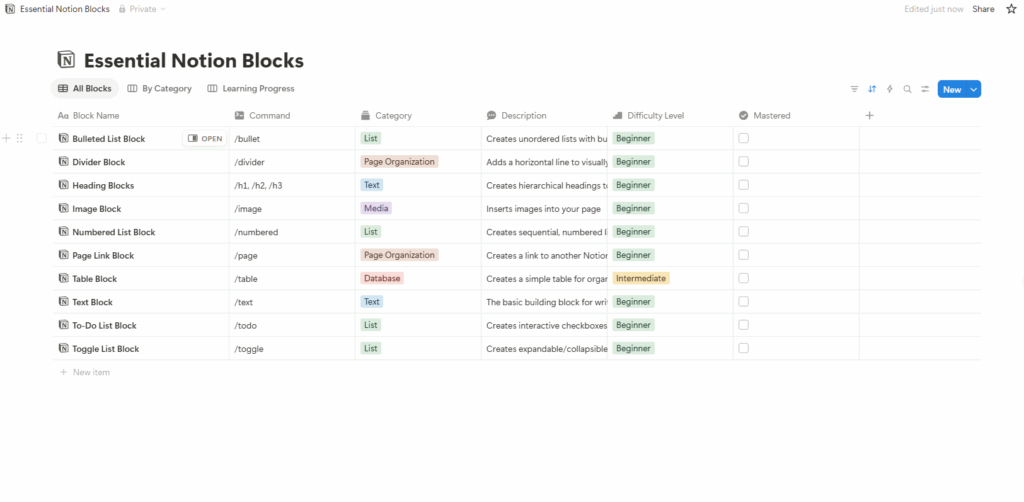
At gif.how, we’re constantly creating new short video tutorials to help you navigate the world of software. Stay tuned for more Notion tips and tricks that will empower you to build your perfect digital workspace, one block at a time. Start experimenting with these essential blocks today, and you’ll be amazed at what you can create!
You also interested in
You’re Using Notion Wrong — Here’s How to Unlock Its Full Power
